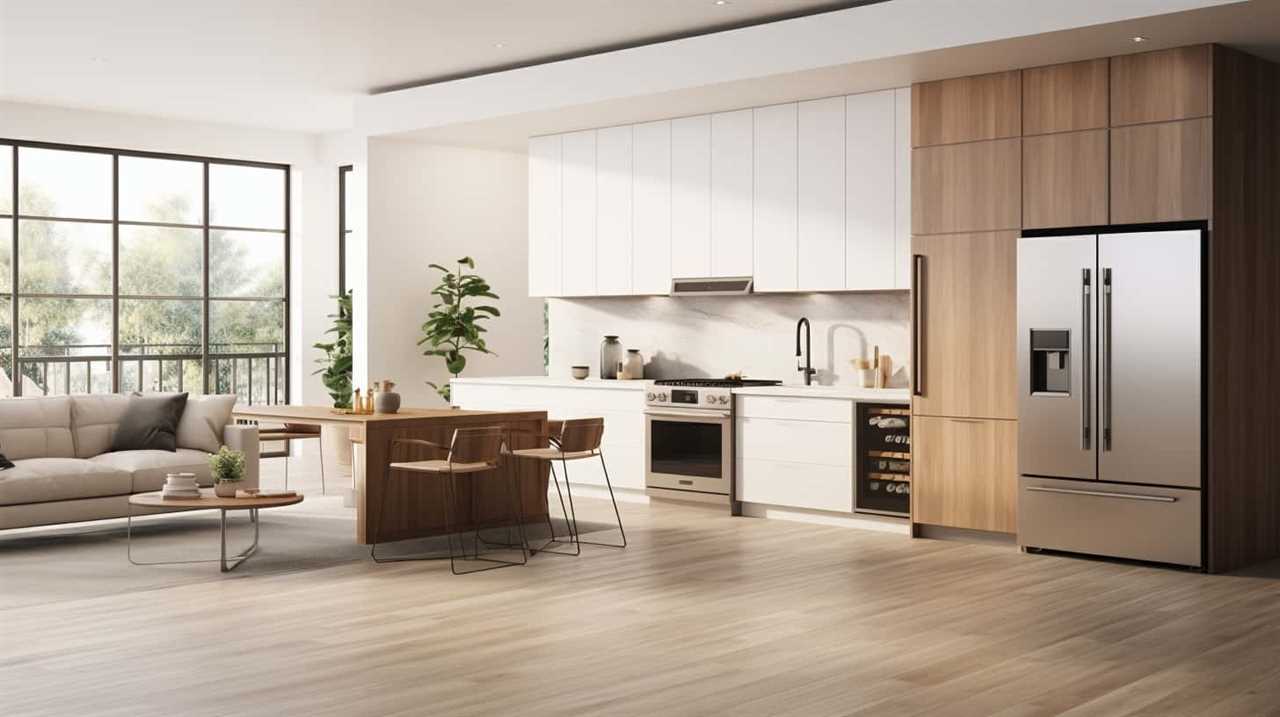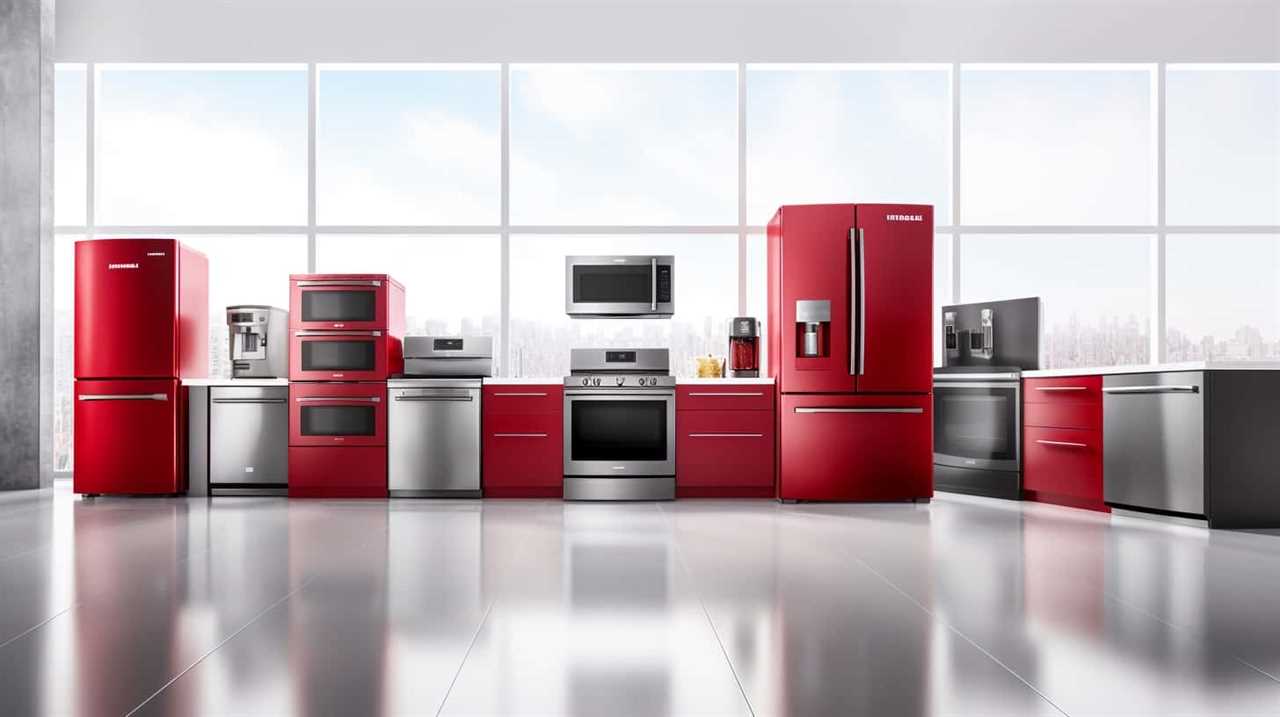In our pursuit of culinary greatness, we must not forget the significance of adhering to kitchen appliance safety standards. Balancing creativity with caution is crucial for mastering our craft.
As aspiring culinary experts, we must adhere to the best practices that guarantee the safety of our appliances. By following these guidelines, we can prevent accidents and maintain a secure environment in our kitchens.
From regular inspections and proper installations to safe handling and operation, each practice plays a crucial role in upholding safety standards. Additionally, our awareness of hazardous materials, fire prevention measures, childproofing, locking mechanisms, and compliance with electrical safety standards will further safeguard our culinary haven.
Let us explore these seven best practices to ensure a secure and successful culinary journey.

Key Takeaways
- Regular inspection and maintenance are important for identifying potential hazards and extending the lifespan of appliances.
- Proper installation and ventilation reduce the risk of accidents and ensure appliances function properly.
- Safe handling and operation of appliances prevent accidents and injuries.
- Proper appliance usage, including regular inspections and servicing, helps prevent breakdowns and safety hazards.
Regular Inspection and Maintenance
To ensure kitchen appliance safety compliance, it’s essential that we regularly inspect and maintain our appliances. By conducting regular inspections, we can identify any potential hazards or issues before they escalate into major problems. The frequency of these inspections will depend on the specific appliance, but a general rule of thumb is to inspect them at least once every six months. This will allow us to catch any potential issues early on and address them promptly.
When performing these inspections, it’s important to have a maintenance checklist handy. This checklist should include items such as checking for loose or frayed wires, ensuring proper ventilation, and inspecting the seals and gaskets for any signs of wear or damage. Additionally, it’s crucial to clean the appliances regularly, removing any built-up grease or debris that could pose a fire hazard.
By adhering to a regular inspection and maintenance schedule, we can ensure the safety and longevity of our kitchen appliances. Not only will this protect us from potential accidents or malfunctions, but it will also extend the lifespan of our appliances, saving us money in the long run.
Proper Installation and Ventilation
One important aspect of kitchen appliance safety compliance is ensuring proper installation and ventilation. Proper installation ensures that the appliances are securely placed and function correctly, reducing the risk of accidents.
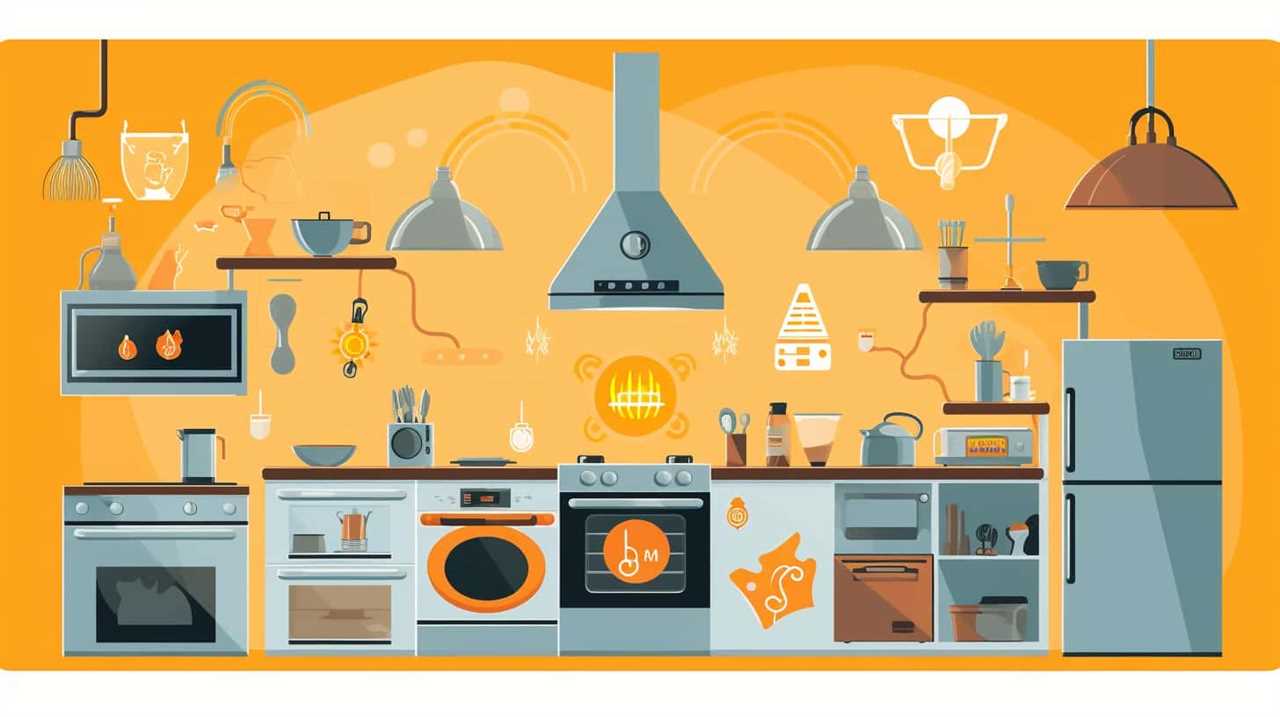
Ventilation is essential to remove smoke, odors, and gases, maintaining a safe and healthy environment in the kitchen.
Here are some best practices for kitchen appliance placement and ventilation system installation:
- Consider the layout: When installing appliances, consider their proximity to each other and to other objects in the kitchen. Keep appliances away from flammable materials and ensure there’s enough space for safe operation and maintenance.
- Follow manufacturer’s instructions: Always refer to the manufacturer’s guidelines for appliance installation. This includes specifications on electrical connections, gas lines, and ventilation requirements.
- Install proper ventilation systems: Choose and install the appropriate ventilation system for each appliance. This may include range hoods, exhaust fans, or ventilation ducts. Ensure that the ventilation system effectively removes smoke, steam, and odors from the kitchen.
- Regularly clean and maintain ventilation systems: Regularly clean and maintain the ventilation systems to ensure their proper functioning. This includes cleaning filters, checking ducts for blockages, and inspecting fans for proper operation.
Safe Handling and Operation
When it comes to safe handling and operation of kitchen appliances, there are a few key points to keep in mind.
First, it’s crucial to use the appliances according to their intended purpose and follow the manufacturer’s instructions.

Secondly, it’s important to be aware of potential hazards such as hot surfaces, sharp blades, and electrical components, and take necessary precautions to avoid accidents.
Lastly, regular maintenance and inspections can help identify any issues or malfunctions that may pose a safety risk, ensuring the appliances are in proper working condition.
Proper Appliance Usage
In our kitchen, we prioritize safe handling and operation of appliances. To ensure proper appliance usage, we follow these best practices:
- Regular appliance maintenance: We schedule routine inspections and servicing for our appliances to identify any potential issues and prevent breakdowns or accidents.
- Prompt appliance troubleshooting: If we notice any unusual noises, smells, or malfunctions, we immediately stop using the appliance and consult the user manual or contact a professional for assistance.
- Correct installation: We carefully read and follow the manufacturer’s instructions when installing new appliances to ensure they’re set up correctly and safely.
- Responsible usage: We always use appliances for their intended purposes and avoid overloading or misusing them, as this can lead to damage or safety hazards.
Avoiding Potential Hazards
To ensure safe handling and operation of kitchen appliances, we prioritize avoiding potential hazards. One key aspect of this is practicing safe storage and maintaining good kitchen organization. Properly storing appliances when they aren’t in use can prevent accidents and injuries. It’s important to keep appliances in designated areas, away from the edge of countertops or in places where they can easily be knocked over. Additionally, keeping cords neatly organized and out of the way can prevent tripping hazards.
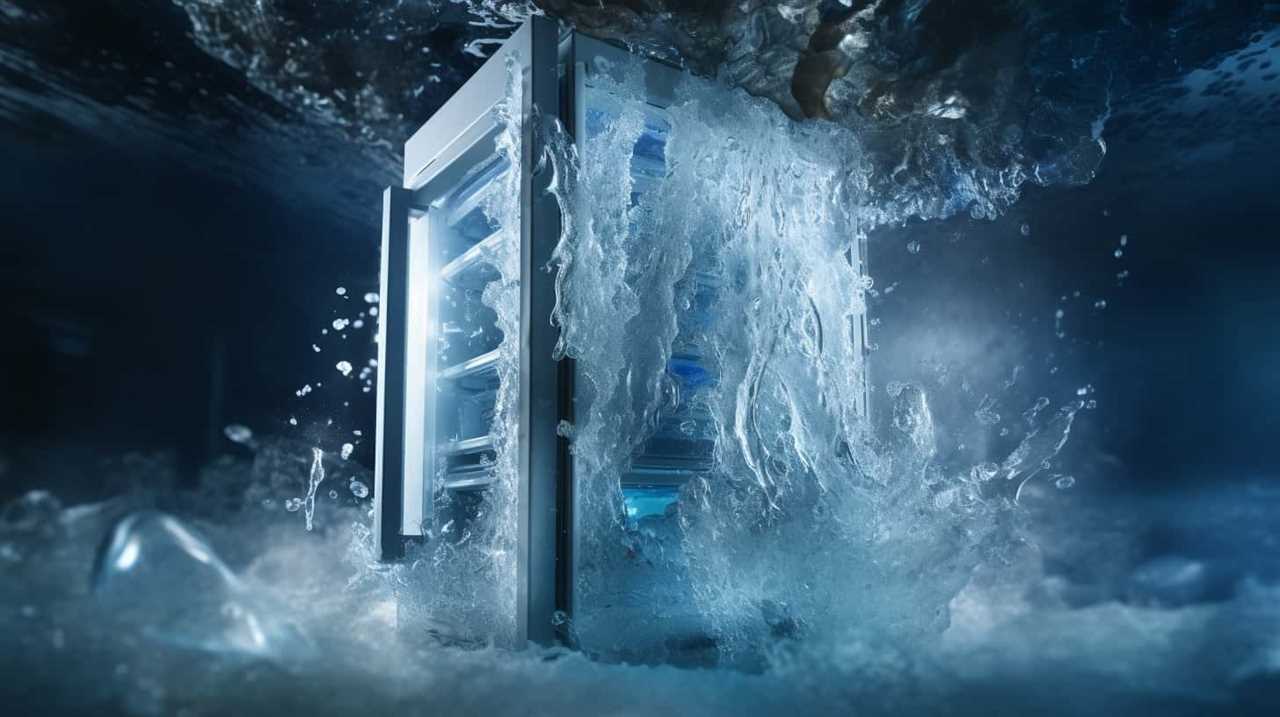
By implementing these safe storage practices and maintaining a well-organized kitchen, we can reduce the risk of accidents and create a safer environment for everyone.
Now, let’s move on to discussing the importance of awareness of hazardous materials in the kitchen.
Awareness of Hazardous Materials
We regularly inspect our kitchen appliances to stay aware of any hazardous materials. It’s crucial to have a comprehensive understanding of the potential dangers lurking in our kitchens. Here are some key points to keep in mind when it comes to hazardous materials:
- Hazardous material disposal: Proper disposal of hazardous materials is essential to prevent harm to ourselves and the environment. Always follow local regulations and guidelines when disposing of chemicals, batteries, and other potentially dangerous substances.
- Safety labels: Pay close attention to safety labels on kitchen appliances. These labels provide valuable information regarding potential hazards, precautions, and proper usage. Familiarize yourself with these labels and ensure that every member of your household does the same.
- Chemical storage: Store chemicals in a secure and well-ventilated area away from food, heat sources, and children. Keep them in their original containers and never mix different chemicals together, as this can lead to dangerous reactions.
- Safety data sheets: Safety data sheets (SDS) provide detailed information about hazardous substances, including proper handling, storage, and disposal procedures. It’s crucial to have access to SDS for all chemicals used in your kitchen and to understand the information they provide.
By being aware of hazardous materials and taking appropriate precautions, we can significantly reduce the risk of accidents and protect ourselves and our loved ones.

Now, let’s move on to the next section, where we’ll discuss fire prevention measures.
Fire Prevention Measures
One important aspect of kitchen appliance safety compliance is implementing effective fire prevention measures in our everyday routines. To ensure the safety of both ourselves and our loved ones, it’s crucial to have a fire extinguisher readily available in the kitchen. A fire extinguisher is a vital tool that can quickly suppress small fires before they’ve a chance to spread. It’s essential to choose a fire extinguisher that’s appropriate for kitchen use and to regularly check its pressure levels and expiration date.
In addition to having a fire extinguisher, installing smoke alarms throughout the kitchen and the rest of the house is equally important. Smoke alarms serve as an early warning system, alerting us to the presence of smoke or fire. Regularly test the smoke alarms to ensure they’re functioning correctly by pressing the test button and replacing the batteries at least once a year.
Childproofing and Locking Mechanisms
Implementing childproofing measures and installing locking mechanisms is essential for ensuring kitchen appliance safety compliance. Childproofing techniques and appliance safety locks can greatly reduce the risk of accidents and injuries involving children in the kitchen. Here are some important measures to consider:

- Cabinet locks: Install locks on all cabinets and drawers within a child’s reach. This will prevent them from accessing dangerous items such as knives, cleaning products, or small appliances.
- Stove knob covers: Use stove knob covers to prevent children from accidentally turning on the burners or oven. These covers can be easily installed and provide an additional layer of protection.
- Appliance latches: Attach latches to the doors of appliances such as refrigerators, dishwashers, and ovens. This will prevent children from opening them and potentially causing harm.
- Outlet covers: Use outlet covers to block access to electrical outlets. This will prevent children from inserting objects into the outlets and potentially receiving an electric shock.
Compliance With Electrical Safety Standards
When it comes to kitchen appliance safety, it’s crucial to ensure compliance with electrical safety standards. This involves using electrical appliances properly and following recommended safety measures.
Safe Electrical Appliance Usage
To ensure compliance with electrical safety standards, we must prioritize the safe usage of electrical appliances in the kitchen. Here are some best practices to follow:
- Regular maintenance: Proper maintenance of electrical appliances is crucial for safe usage. This includes checking cords, plugs, and sockets for any signs of damage and addressing them promptly.
- Safe cleaning methods: When cleaning electrical appliances, it’s important to follow safe practices. Avoid using excessive water or liquid cleaners near electrical components to prevent the risk of electric shock.
- Unplug when not in use: Always unplug electrical appliances when they aren’t in use, especially before cleaning or repairing them. This helps prevent accidental electrical shocks and reduces the risk of fire hazards.
- Avoid overloading outlets: Overloading outlets with multiple appliances can lead to overheating and potential electrical hazards. Use power strips or extension cords with surge protectors to distribute the load evenly.
Ensuring Compliance Measures
In order to ensure compliance with electrical safety standards, we prioritize maintaining a safe environment for kitchen appliance usage. This involves implementing comprehensive compliance training programs to educate our staff on the proper handling and operation of kitchen appliances. We also enforce strict certification requirements to ensure that all employees possess the necessary skills and knowledge to operate these appliances safely. By adhering to these measures, we reduce the risk of electrical accidents and create a safer working environment.
To illustrate the importance of compliance training and certification requirements, we have provided a table below:
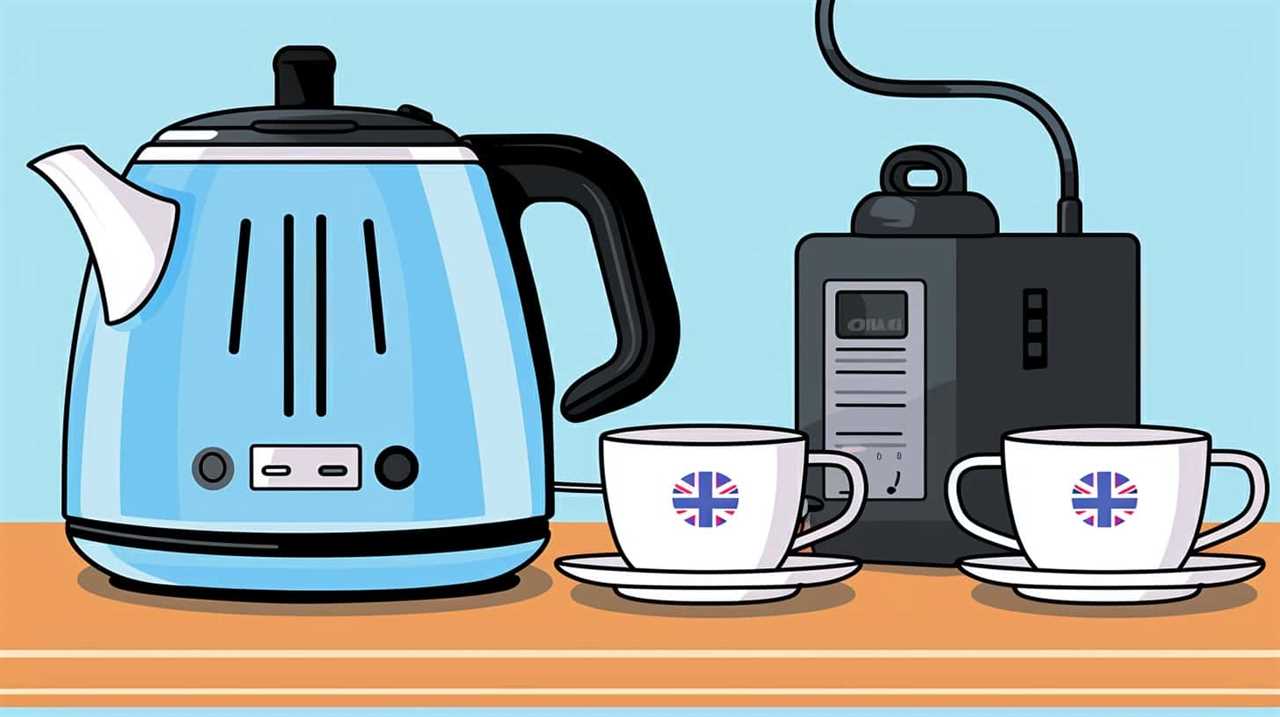
| Compliance Training Benefits | Certification Requirements Benefits |
|---|---|
| Enhances employee knowledge and skills | Ensures employees meet industry standards |
| Reduces the risk of accidents and injuries | Demonstrates commitment to safety |
| Improves overall workplace safety | Increases customer trust and confidence |
Frequently Asked Questions
Are There Any Specific Guidelines for Cleaning and Maintaining Kitchen Appliances?
Cleaning guidelines and maintenance tips for kitchen appliances are essential to ensure their proper functioning and longevity. Regularly cleaning and wiping down surfaces, removing food debris, and using appropriate cleaning products are key to maintaining a hygienic and safe environment in the kitchen.
Additionally, checking and replacing worn-out parts, such as filters or seals, and scheduling regular professional maintenance can help prevent potential issues and ensure optimal appliance performance. These practices contribute to the overall safety and efficiency of kitchen appliances.
What Safety Precautions Should Be Taken During the Installation of Kitchen Appliances?
When it comes to installing kitchen appliances, safety should always be our top priority. Proper installation not only ensures the efficient functioning of the appliances but also minimizes the risk of accidents.
To guarantee installation safety, it’s crucial to follow the manufacturer’s guidelines and recommendations. This includes ensuring that appliances are positioned correctly, with appropriate clearances for ventilation and accessibility.

How Can I Ensure Safe Handling and Operation of Kitchen Appliances?
To ensure safe handling and operation of kitchen appliances, we prioritize safe storage and proper maintenance.
It’s crucial to store appliances in a secure and accessible location, away from children and potential hazards.
Regular maintenance, such as cleaning and checking for any malfunctions, is essential to prevent accidents.
Following the manufacturer’s guidelines and using appliances as intended will also contribute to their safe operation.

Are There Any Hazardous Materials Commonly Found in Kitchen Appliances That I Should Be Aware Of?
When it comes to kitchen appliance safety, it’s important to be aware of any hazardous materials that may be present. Some common kitchen appliances, such as refrigerators and air conditioners, contain refrigerants that can be harmful if released into the environment.
Additionally, certain appliances like microwaves and ovens may have coatings or finishes that contain potentially harmful chemicals. By staying informed about these potential hazards, we can take the necessary precautions to ensure our kitchen appliance safety compliance.
What Are Some Additional Fire Prevention Measures to Consider in the Kitchen?
When it comes to fire prevention in the kitchen, there are some additional measures to consider.
Firstly, it’s important to use cooking oils properly, ensuring they aren’t overheated or left unattended.
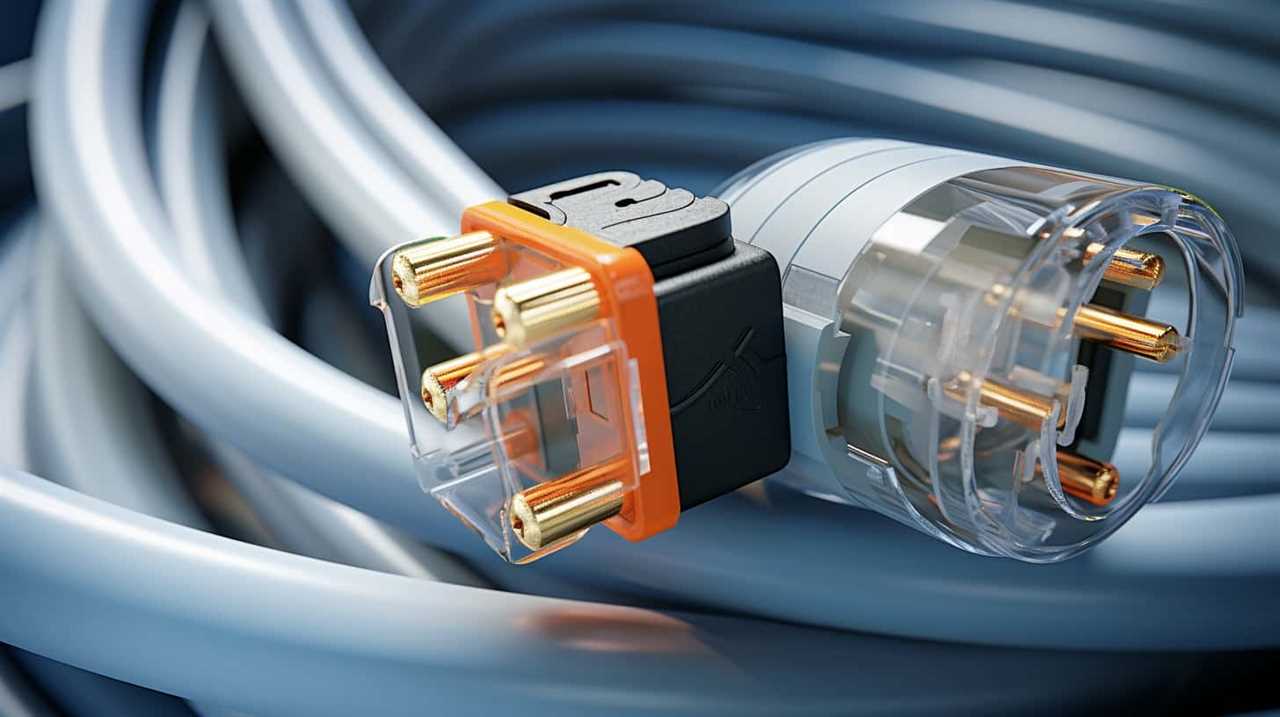
Additionally, keeping flammable materials, such as curtains or paper towels, away from heat sources is crucial.
Conclusion
So there you have it, folks! Follow these 7 best practices for kitchen appliance safety compliance and you’ll be well on your way to avoiding any pesky accidents or mishaps.
Because who needs excitement in the kitchen, right?
Remember, regular inspections, proper installation, safe handling, and awareness of hazardous materials are key.
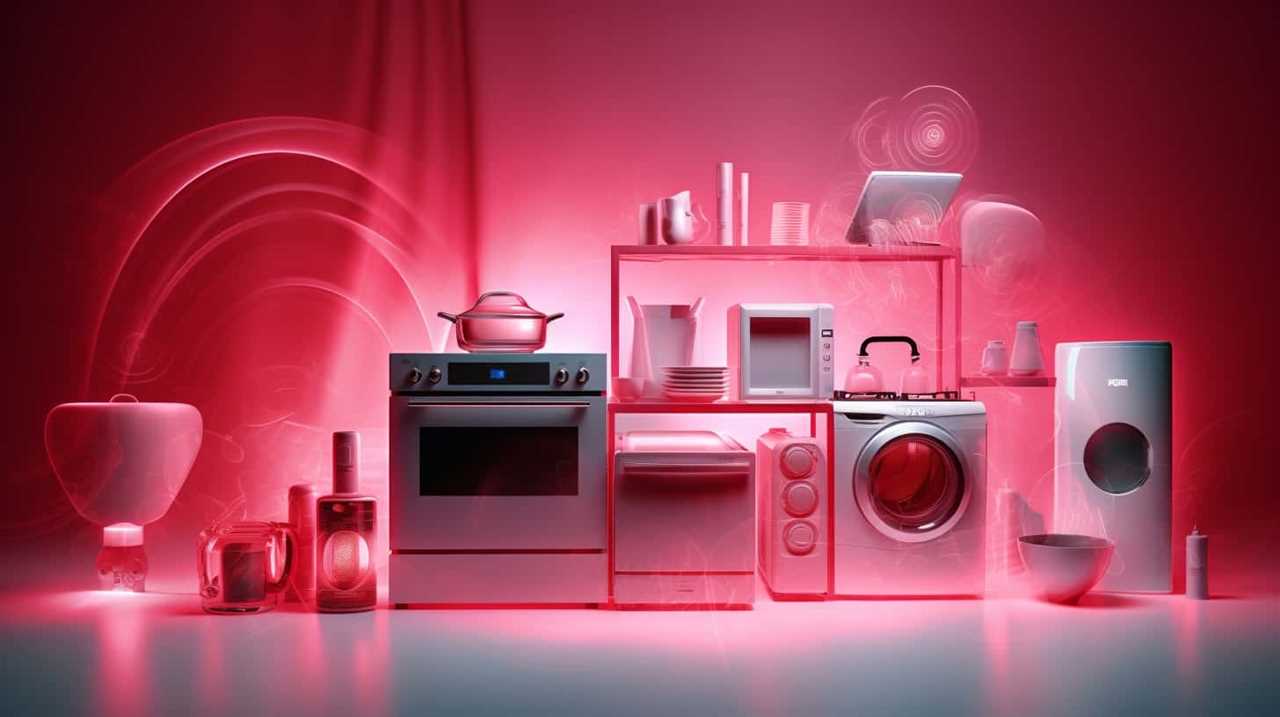
And don’t forget to childproof those appliances and comply with electrical safety standards.
Stay safe, stay boring!

